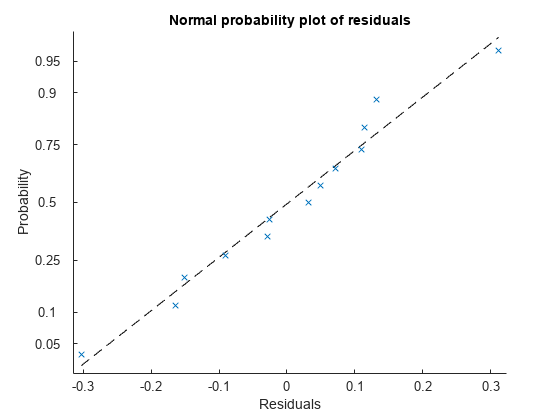plotResiduals
Plot residuals of nonlinear regression model
Syntax
Description
plotResiduals( creates a histogram
plot of the nonlinear regression model (mdl)mdl) residuals.
plotResiduals(
specifies additional options using one or more name-value arguments. For example, you
can specify the residual type and the graphical properties of residual data
points.mdl,plottype,Name,Value)
h = plotResiduals(___)h to modify the
properties of a specific line or patch after you create the plot. For a list of
properties, see Line Properties and Patch Properties.
Examples
Input Arguments
Name-Value Arguments
Output Arguments
Tips
The data cursor displays the values of the selected plot point in a data tip (small text box located next to the data point). The data tip includes the x-axis and y-axis values for the selected point, along with the observation name or number.

